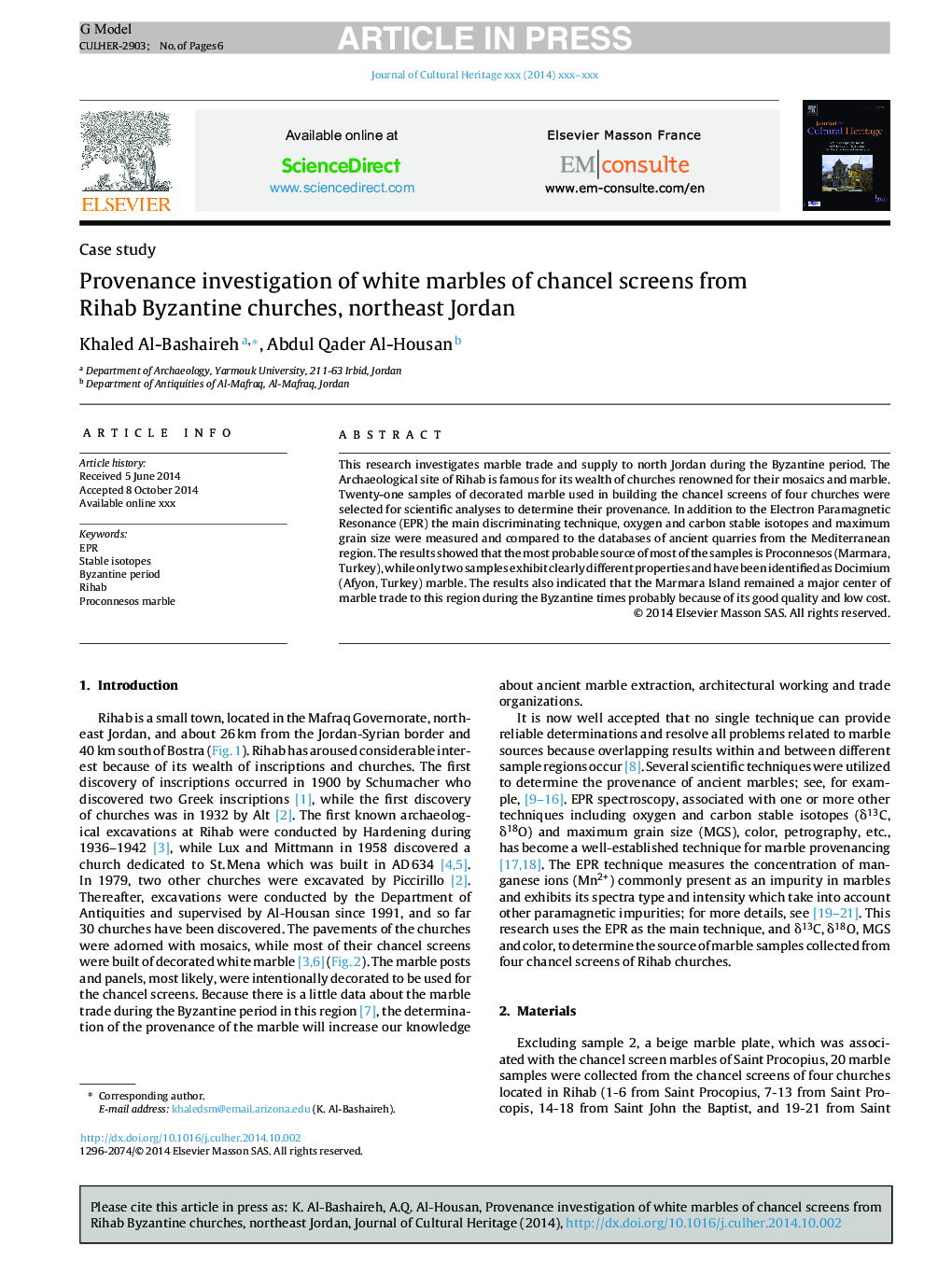| Article ID | Journal | Published Year | Pages | File Type |
|---|---|---|---|---|
| 10500012 | Journal of Cultural Heritage | 2015 | 6 Pages |
Abstract
This research investigates marble trade and supply to north Jordan during the Byzantine period. The Archaeological site of Rihab is famous for its wealth of churches renowned for their mosaics and marble. Twenty-one samples of decorated marble used in building the chancel screens of four churches were selected for scientific analyses to determine their provenance. In addition to the Electron Paramagnetic Resonance (EPR) the main discriminating technique, oxygen and carbon stable isotopes and maximum grain size were measured and compared to the databases of ancient quarries from the Mediterranean region. The results showed that the most probable source of most of the samples is Proconnesos (Marmara, Turkey), while only two samples exhibit clearly different properties and have been identified as Docimium (Afyon, Turkey) marble. The results also indicated that the Marmara Island remained a major center of marble trade to this region during the Byzantine times probably because of its good quality and low cost.
Keywords
Related Topics
Physical Sciences and Engineering
Chemistry
Physical and Theoretical Chemistry
Authors
Khaled Al-Bashaireh, Abdul Qader Al-Housan,
